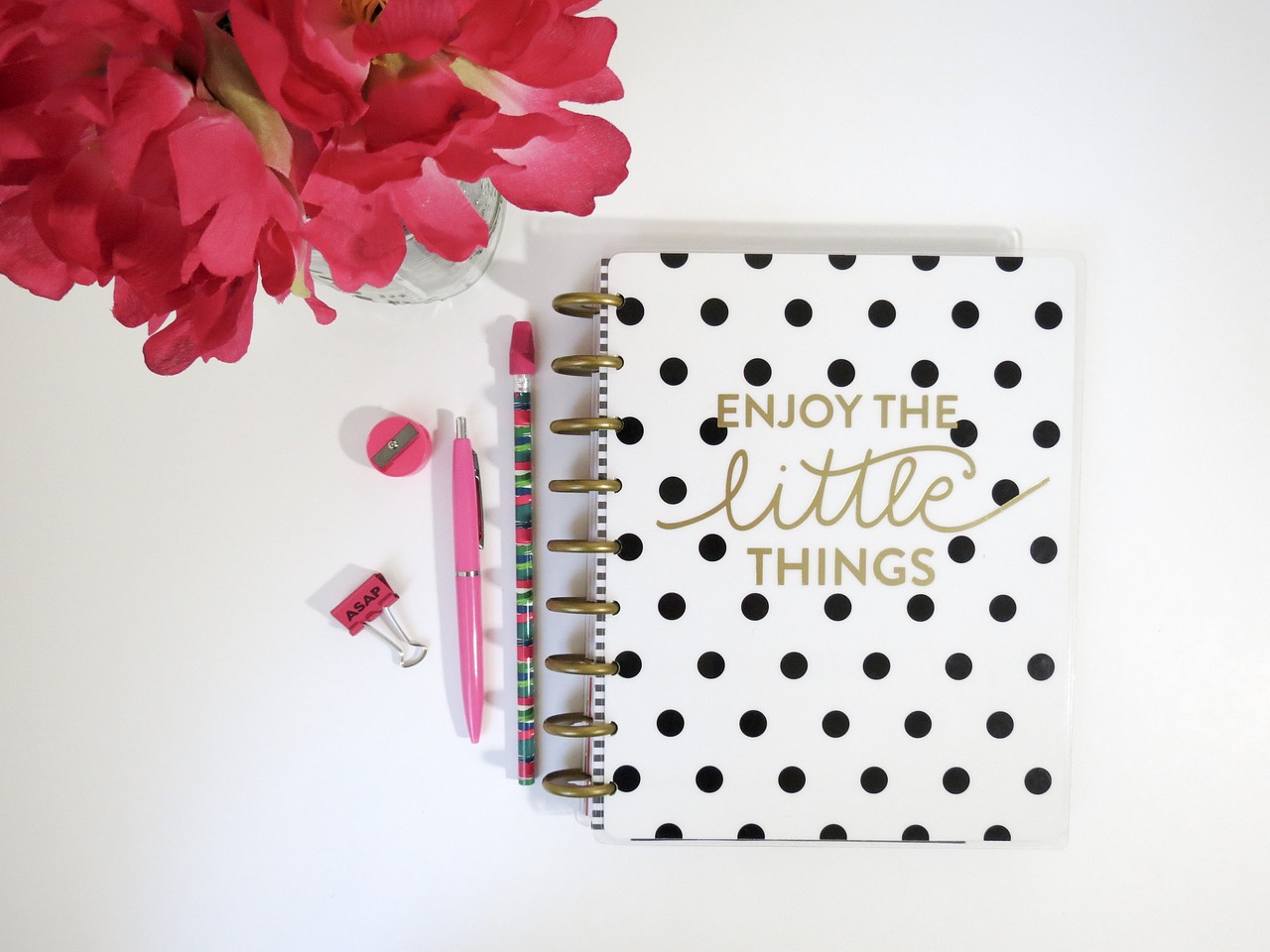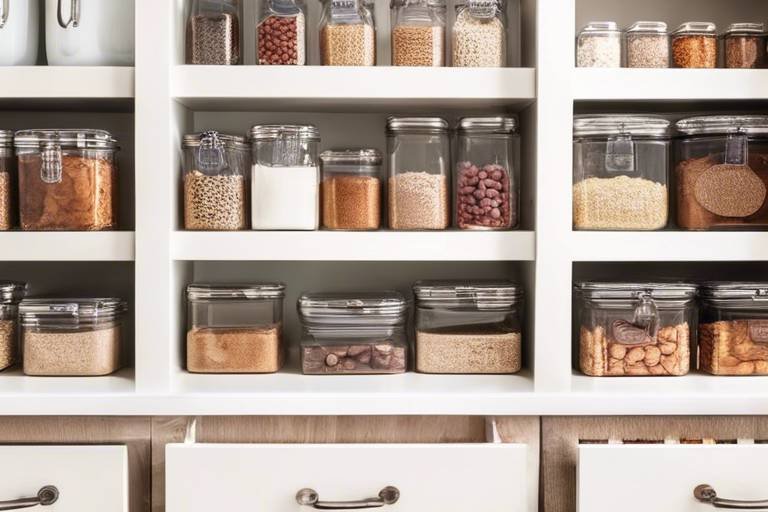Tips for Creating an Efficient Pantry Storage System
Are you tired of rummaging through your pantry looking for that elusive ingredient? Do you often find expired items buried at the back of your shelves? It's time to revolutionize your pantry storage system and transform it into an efficient and organized space that not only saves you time but also prevents food wastage. By implementing smart strategies and utilizing every inch of available space, you can create a pantry that is not only functional but also visually appealing.
One of the key aspects of optimizing your pantry space is maximizing shelf space. Instead of stacking items haphazardly, learn how to arrange them strategically to make the most of every shelf. By utilizing various storage solutions such as shelf risers, baskets, and organizers, you can create a system that accommodates more items while keeping everything easily accessible.
Labeling and categorizing your pantry items is another essential step in creating an efficient storage system. By clearly labeling containers and categorizing items based on their type or usage, you can streamline meal preparation and cooking processes. Not only does this save you time, but it also helps in preventing food waste by ensuring that items are used before they expire.
Utilizing storage containers is a game-changer when it comes to maintaining the freshness of pantry items. Invest in a variety of airtight containers to store ingredients such as flour, sugar, and grains. Not only do these containers help in preserving the quality of the food, but they also create a visually appealing and uniform look in your pantry.
Implementing the FIFO (First In, First Out) method is crucial for ensuring that your pantry items are rotated effectively. By organizing your items based on their expiration dates and consuming the oldest ones first, you can prevent food spoilage and avoid having expired products taking up valuable space in your pantry.
Creating zones within your pantry is a concept that can significantly enhance organization and accessibility. Designate specific areas for different categories of items such as snacks, canned goods, and spices. By creating designated zones, you can easily locate items and maintain a tidy and organized pantry space.
Don't overlook the potential of utilizing door and wall space in your pantry for additional storage options. Install hooks, racks, or shelves on the doors and walls to hang frequently used items or store lightweight essentials. This creative approach not only maximizes space but also ensures that commonly accessed items are within reach.
Maintaining a regular inventory of your pantry items is essential for staying on top of what you have and what you need. Conducting periodic inventories allows you to track items, identify shortages, and avoid overstocking or duplicating ingredients. By staying organized and aware of your pantry inventory, you can prevent last-minute grocery runs and make efficient use of your storage space.
Customizing your pantry storage system to fit your specific needs and preferences is key to achieving optimal efficiency. Consider your cooking habits, family size, and the types of ingredients you use regularly when designing your pantry layout. By tailoring your storage solutions to suit your lifestyle, you can create a functional and personalized pantry space that works for you.

Maximizing Shelf Space
Discover how to optimize your pantry space with these practical tips and organization strategies.
When it comes to maximizing shelf space in your pantry, every inch counts. By organizing items strategically, you can make the most of the available space and ensure easy access to all your essentials. Consider using stackable shelves or risers to create additional levels for storing items without wasting vertical space.
Furthermore, **grouping** similar items together can help you efficiently utilize the shelf space. By categorizing items such as canned goods, spices, and baking essentials, you can easily locate what you need without having to search through cluttered shelves.
Another effective strategy is **installing hooks or racks** on the inside of pantry doors to hang lightweight items like aprons, bags, or small baskets. This not only frees up shelf space but also keeps frequently used items within reach.
Explore the benefits of labeling and categorizing pantry items to streamline meal preparation and prevent food waste.
Find out how using storage containers can help maintain the freshness of pantry items and create a visually appealing storage system.
Understand the FIFO (First In, First Out) method and how it can help you rotate pantry items to avoid expiration and food spoilage.
Discover the concept of creating zones in your pantry for different categories of items to enhance organization and accessibility.
Explore creative ways to maximize door and wall space in your pantry for additional storage options and easy access to frequently used items.
Learn the importance of conducting regular pantry inventories to track items, identify shortages, and maintain an organized storage system.
Find inspiration on how to tailor your pantry storage system to fit your lifestyle, cooking habits, and family's needs for optimal efficiency.

Labeling and Categorizing
Discover how to optimize your pantry space with these practical tips and organization strategies.
When it comes to maintaining an efficient pantry storage system, are key elements that can make a significant difference. By clearly labeling each item and categorizing them based on their type or usage, you can streamline meal preparation, prevent food waste, and easily locate ingredients when needed. Imagine your pantry as a well-organized library, with each item having its designated place and category, making it effortless to find what you need without any hassle.
One effective way to implement labeling and categorizing is by using clear containers or storage bins for different groups of items. For example, you can have separate containers for grains, spices, canned goods, and snacks, each labeled accordingly. This not only enhances the visual appeal of your pantry but also ensures that everything is neatly arranged and easily identifiable.
Moreover, creating a inventory list that details the items in each category can further aid in keeping track of your pantry supplies. This list can be updated regularly to reflect any additions or consumption of items, helping you stay organized and informed about what needs restocking.
By incorporating a systematic approach to labeling and categorizing your pantry items, you can transform your storage space into a well-structured and efficient system that simplifies your cooking routine and minimizes the chances of overlooking ingredients or letting them go to waste.

Utilizing Storage Containers
When it comes to optimizing your pantry storage system, utilizing storage containers can be a game-changer. These containers not only help in maintaining the freshness of pantry items but also contribute to creating a visually appealing and organized storage setup. By using clear containers, you can easily see the contents and keep track of your inventory, preventing items from getting lost or forgotten at the back of shelves.
One effective strategy is to group similar items together in storage containers. For example, you can store all your baking supplies in one container, snacks in another, and grains in a separate one. This not only streamlines the organization process but also makes it convenient to locate specific items when needed. Additionally, storing items in containers can help protect them from pests and spills, ensuring they remain in top condition.
Consider investing in a variety of container sizes to accommodate different types of pantry items. Smaller containers are ideal for spices, tea bags, or nuts, while larger containers can hold bulkier items like pasta, rice, or flour. Stackable containers are also a great space-saving solution, allowing you to maximize vertical storage space in your pantry.
Labeling your storage containers is key to maintaining an efficient pantry system. Clear and descriptive labels can help you quickly identify the contents of each container, making it easier to find what you need during meal preparation. You can use a label maker for a uniform look or opt for chalkboard labels for a more customizable and reusable option.
When selecting storage containers, opt for durable and airtight options to ensure the longevity of your pantry items. Transparent containers are particularly useful as they allow you to see the contents at a glance, eliminating the need to open multiple containers to find a specific ingredient. Remember to regularly clean and organize your containers to maintain a functional and tidy pantry storage system.

Implementing FIFO Method
Implementing the FIFO (First In, First Out) method in your pantry organization is a game-changer when it comes to maintaining the freshness of your food items. This method ensures that the oldest items are used first, reducing the chances of expiration and food wastage. By organizing your pantry in a way that newer items are placed behind the older ones, you naturally rotate your stock and prevent items from getting forgotten at the back of the shelves.
Imagine your pantry as a bustling marketplace where products are constantly moving in and out. Just like a well-managed store, implementing the FIFO method keeps your inventory fresh and ensures that nothing goes to waste. It's a simple yet effective strategy that can save you money and time in the long run.
To implement the FIFO method successfully, consider using clear storage containers or shelves that allow you to see the expiration dates easily. By having a clear view of your inventory, you can quickly identify which items need to be used first, making meal planning and preparation a breeze. Additionally, regularly check the dates on your pantry items and make a habit of rotating products to maintain the integrity of your stock.

Creating Zones
Discover how to optimize your pantry space with these practical tips and organization strategies.
When it comes to organizing your pantry effectively, creating zones can be a game-changer. Imagine your pantry as a mini supermarket, with different aisles for various categories of items. By designating specific areas for canned goods, spices, grains, snacks, and baking supplies, you can easily locate what you need without rummaging through the entire pantry. This zoning approach not only enhances organization but also makes it convenient to maintain inventory levels and plan meals efficiently.

Utilizing Door and Wall Space
When it comes to optimizing your pantry storage system, don't overlook the potential of door and wall space. These often underutilized areas can offer valuable storage solutions and easy access to frequently used items. By incorporating hooks, racks, and baskets on the doors, you can create additional storage for spices, small utensils, or even lightweight pantry items. This not only maximizes space but also keeps these items within reach, making meal preparation more efficient.
For the walls, consider installing shelves or pegboards to store items like cutting boards, aprons, or kitchen towels. This vertical storage option can free up valuable shelf space inside the pantry while keeping these essentials organized and easily accessible. By utilizing door and wall space effectively, you can create a more functional and organized pantry that caters to your specific storage needs.

Maintaining Regular Inventory
Discover how to optimize your pantry space with these practical tips and organization strategies.
Regularly conducting inventory checks in your pantry is crucial for staying organized and efficient. By keeping track of your pantry items, you can easily identify what needs restocking, what items need to be used before expiration, and avoid unnecessary duplicate purchases. Maintaining a regular inventory also helps in meal planning, as you can quickly see what ingredients you have on hand and plan your meals accordingly.

Customizing to Your Needs
When it comes to organizing your pantry, customization is key to creating a system that works best for you. Consider your unique needs, cooking habits, and family size to tailor your pantry storage to fit your lifestyle seamlessly. By customizing your pantry organization, you can optimize efficiency and make meal preparation a breeze.
One way to customize your pantry is by adjusting shelf heights to accommodate items of different sizes. Taller shelves can store bulkier items like cereal boxes and small appliances, while shorter shelves are perfect for canned goods and spices. By customizing shelf heights, you can maximize storage space and ensure everything has its designated spot.
Another way to customize your pantry is by incorporating adjustable shelving units. These versatile shelves can be easily moved to create more space for taller items or to accommodate changing storage needs. With adjustable shelving, you have the flexibility to reorganize your pantry whenever necessary without hassle.
Consider implementing a color-coded system to further customize your pantry storage. Assigning specific colors to different categories of items can help you quickly locate what you need and maintain a visually appealing organization. For example, use green containers for snacks, red for baking supplies, and blue for canned goods. Customizing your pantry with color coding adds a fun and practical touch to the organization process.
Don't forget to personalize your pantry storage by incorporating labels and signage. Clearly labeling shelves, containers, and bins can prevent confusion and make it easy to find ingredients during meal prep. You can use chalkboard labels, adhesive tags, or even a labeling machine to customize your pantry with a labeling system that suits your style.
Lastly, consider your family's dietary preferences and cooking habits when customizing your pantry. If you have dietary restrictions or specific food preferences, customize your pantry storage to prioritize these items. Create designated zones for gluten-free products, organic foods, or snacks for kids to ensure easy access to essentials.
Frequently Asked Questions
- How can I maximize shelf space in my pantry?
To maximize shelf space in your pantry, consider using stackable shelves, risers, and under-shelf baskets. These tools can help you make use of vertical space efficiently and ensure that no space goes unused.
- Why is labeling and categorizing pantry items important?
Labeling and categorizing pantry items can save you time and effort during meal preparation by making it easier to locate ingredients. It also helps in preventing food waste as you can clearly see what you have and avoid buying duplicates.
- How do storage containers help in maintaining pantry items?
Storage containers help maintain the freshness of pantry items by keeping them sealed and protected from air and moisture. They also contribute to an organized and visually appealing pantry storage system.
- What is the FIFO method and why should I implement it?
The FIFO (First In, First Out) method involves using older pantry items before newer ones to prevent expiration and food spoilage. By implementing this method, you ensure that items are used in the order they were purchased, reducing waste.
- How can I create zones in my pantry?
To create zones in your pantry, group similar items together such as baking supplies, canned goods, snacks, etc. This organization system helps you quickly locate items and maintain a tidy pantry space.
- What are some creative ways to utilize door and wall space in the pantry?
You can install hooks, racks, or over-the-door organizers on the pantry door to hang utensils, aprons, or lightweight items. Using wall-mounted shelves or magnetic spice racks can also help free up shelf space inside the pantry.
- Why is it important to maintain a regular inventory of pantry items?
Regular inventory checks help you keep track of pantry items, identify what needs restocking, and avoid buying unnecessary duplicates. It also ensures that your pantry remains organized and items are used before they expire.
- How can I customize my pantry storage system to fit my needs?
To customize your pantry storage system, assess your cooking habits, family size, and the types of items you frequently use. Consider using adjustable shelving, clear containers, or pantry organizers that suit your specific needs and preferences.



















